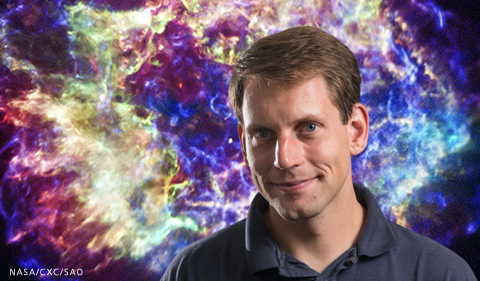Dr. Ryan Chornock is an astrophysicist who joined Physics & Astronomy in Fall 2014. His most recent position was as a postdoc at the Harvard-Smithsonian Center for Astrophysics. He is a member of the Ohio University Astrophysical Institute.
“I spent most of my childhood in the northern Virginia suburbs of Washington, D.C., where a few chance encounters with educational games and some popular science books on my grandparents’ shelves sparked my interest in astrophysics at an early age. I began my professional education by heading off to college at Caltech to receive my B.S. in Physics. While there, my initial summer undergraduate research projects involved testing X-ray detector technologies and understanding the large-scale clustering properties of distant galaxies.
“My positive memories of these experiences help me to understand the importance of providing exposure to cutting-edge research for undergraduates as a complement to formal coursework. After finishing college, I moved on to UC Berkeley for my M.A. and Ph.D. in Astrophysics. I entered grad school with interests in both high-energy astrophysics and cosmology, and I found that the study of supernovae straddled the boundary between these two subfields quite nicely. My dissertation research examined the polarization properties of light from distant supernovae to gain insight into the three-dimensional properties of the explosions, which helps us to understand how stars explode.
“I turned in my thesis in 2009 and moved on to the Harvard-Smithsonian Center for Astrophysics, where I spent the last five years as a postdoc before arriving at Ohio University in August. I have worked on many different topics in astrophysics, mostly united by an interest in phenomena that are transient or time-variable. The enormous length and time scales involved in our universe (it is more than 100 million times older than you are!) can make the ancient idea of static heavens seem superficially plausible, but careful study reveals just how much of the universe is actually dynamic. Technological advances are making time-domain science one of the hottest subfields of astrophysics for at least the next two decades.
“In pursuit of my research,” Chornock concludes, “I have been fortunate to use many of the world’s largest telescopes around the globe. In October, I will be looking forward to traveling to Arizona and using Ohio University’s MDM Observatory for the first time. I am also currently part of research collaborations using telescopes in Hawaii and Chile although, unfortunately, those projects do not require personal travel to the telescopes at the moment.
“When not in my office confronting the vastness of my ignorance, I like to spend time in forests and mountains.”



















Comments